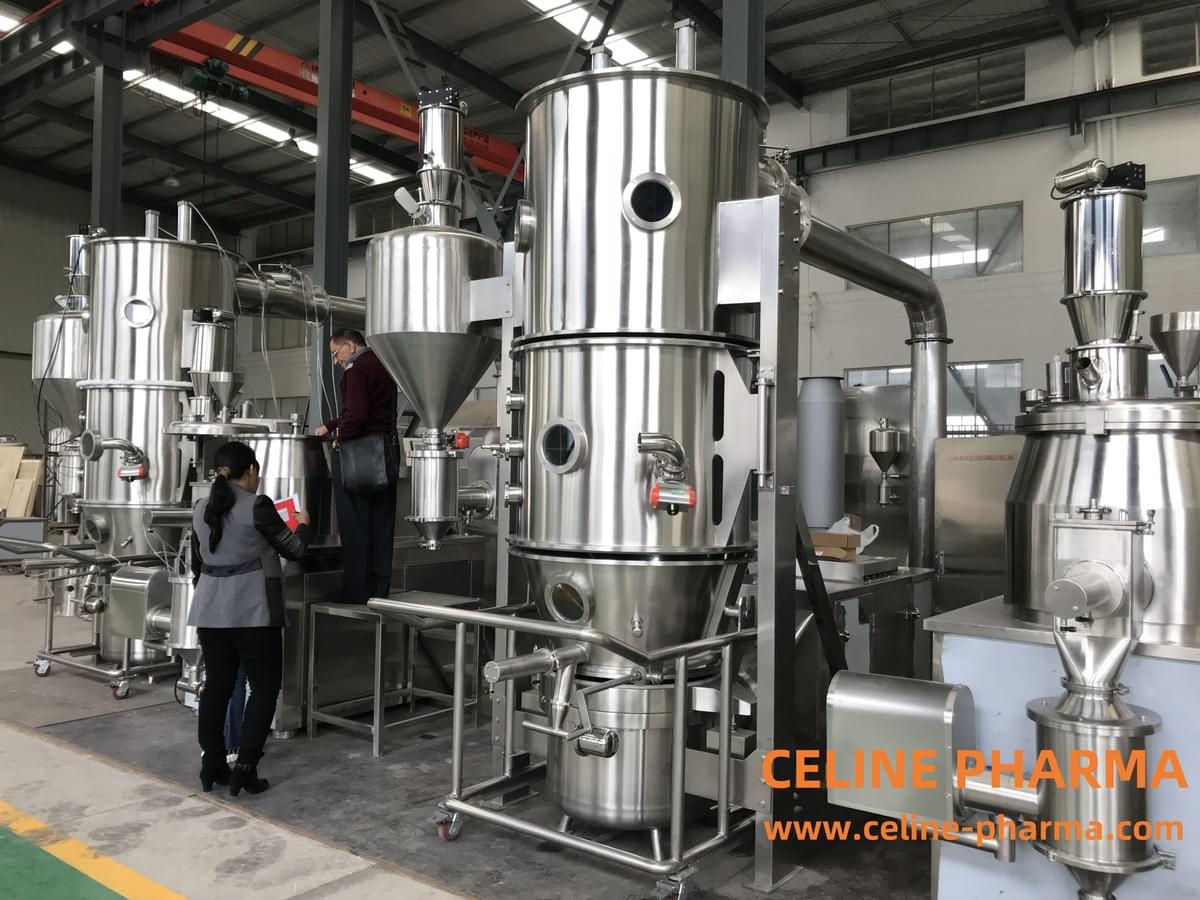Standardized Operating Procedures for Fluidized Bed Dryers
-A Complete Process Analysis from Startup to Maintenance
BY CELINE-PHARMA
Fluidized bed dryers, as key equipment in the pharmaceutical, food, and chemical industries, achieve efficient drying through fluidized contact between hot air and materials. Their operation must strictly adhere to standardized procedures to ensure equipment performance, product quality, and production safety. The following details the three stages of startup preparation, operational control, and shutdown maintenance.

I. Pre-Startup Preparation: Equipment Status and Parameter Calibration
1. Equipment Status Check
Before operation, confirm that the equipment has no abnormal signs, check that all transmission components (such as fans and agitators) are operating smoothly, and that lubricated areas are lubricated.
2. Process Parameter Setting
Set the inlet air temperature, air volume, and drying time based on the material characteristics. For example, when drying traditional Chinese medicine granules, the inlet air temperature should be controlled at 60-65°C, and the steam pressure should not exceed 0.4 MPa. When processing heat-sensitive materials, a low-temperature drying mode should be used to prevent component damage. 3. Bed Laying and Sealing
Apply a 20cm thick layer of dry salt evenly on the perforated plate of the air chamber, ensuring an even and smooth surface to optimize fluidization. After pushing the material hopper into the main unit, seal the flange using the lifting cylinder and insert a temperature probe to monitor the material temperature in real time.
II. Operation Control: Dynamic Monitoring and Parameter Adjustment
1. Startup and Feeding
Start the induced draft fan and blower sequentially. After the internal temperature of the equipment reaches the set value, start the feed motor. Feeding should be smooth and continuous to avoid fluctuations in fluidization caused by excessive amounts. For example, a chemical pharmaceutical company has integrated a swing granulator with a fluidizing dryer to achieve automatic feeding, significantly improving production efficiency.
2. Fluidization Optimization
Adjust the air volume according to the material layer height to maintain a boiling state without excessively blowing away fine powder. If channeling or agglomeration occurs, activate the agitator or adjust the air inlet valve opening.
3. Real-Time Monitoring and Emergency Response
During operation, closely monitor instrument readings (such as steam pressure and outlet temperature) and internal equipment conditions. If material leaks from the exhaust fan outlet, it indicates damaged bags and requires immediate shutdown and replacement. If the motor is overloaded, check voltage stability and wiring for correctness.
III. Maintenance: Cleaning, Maintenance, and Performance Restoration
1. Shutdown Procedure
After drying is complete, shut down the heater, fan, and discharge motor in sequence. If the equipment is out of service for an extended period, empty the material and activate the manual dust removal function to prevent residual dust from affecting subsequent use. For example, one food company requires tapping the hopper with a rubber hammer after shutdown to ensure all powder is removed.
2. Cleaning and Maintenance
Clean the equipment filter and air outlet daily, inspect the dust bag wire rope for wear weekly, and clean the medium-efficiency filter bags monthly. For example, the pharmaceutical industry requires cleaning the bags after each batch to prevent cross-contamination, while the chemical industry requires inspecting and lubricating the fan bearings every six months to extend equipment life.
3. Troubleshooting and Repair
Common faults include burnt-out relays and broken clamp locating pins, often caused by unstable voltage or improper installation. During maintenance, the power supply must be cut off and warning signs must be hung. For example, after replacing the inverter, the cause of the alarm must be checked according to the manual to avoid secondary damage caused by incorrect operation.
Summary
Standardized operation of fluidized bed dryers requires a balance between process accuracy and equipment safety. By strictly adhering to the startup preparation, operational control, and downtime maintenance procedures, the Overall Equipment Effectiveness (OEE) can be significantly improved to over 85%, while simultaneously reducing the failure rate to less than two per year. With the integration of intelligent manufacturing technologies, future equipment will integrate more sensors and IoT capabilities, enabling remote monitoring and predictive maintenance, providing stronger support for high-quality development in the industrial drying sector.
If you have any technical questions or would like to learn more about this device, please feel free to contact us!

